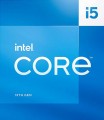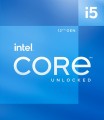Code name
This parameter characterizes, firstly, the technical process (see above), and secondly, some features of the internal structure of processors. A new (or at least updated) codename is introduced to the market with each new CPU generation; chips of the same architecture are "coevals", but may belong to different series (see above). At the same time, one generation can include both one and several code names.
Here are the most common Intel codenames today:
Cascade Lake-X (10th gen),
Comet Lake (10th gen),
Comet Lake Refresh (10th generation),
Rocket Lake (11th generation),
Alder Lake (12th generation),
Raptor Lake (13th generation),
Raptor Lake Refresh (14th generation).
For AMD, this list includes
Zen+ Picasso,
Zen2 Matisse,
Zen2 Renoir,
Zen3 Vermeer,
Zen3 Cezanne,
Zen4 Raphael,
Zen4 Phoenix and
Zen5 Granite Ridge.
In box
This parameter does not so much indicate the difference in technical characteristics as it describes the packaging and computer Hardware.
-
OEM. The tray package, or OEM, provides that the processor is supplied without a cooling system (CO) and without a branded box - the packaging is usually a simple antistatic bag. You need to select and install cooling for such a CPU separately. In addition, components in tray packaging often have a shorter warranty period than in the box version, and their additional equipment is more meager. On the other hand, such solutions are noticeably cheaper, and the absence of CO allows you to select it separately, without relying on the manufacturer’s choice.
—
BOX (without cooler). Processors packed in branded boxes, but not equipped with cooling systems (CO). Such packaging is more expensive than OEM, but the warranty period for “boxed” chips is usually much longer (for example, three years instead of one). The absence of a cooler, on the one hand, requires additional efforts to find and install a coolant; on the other hand, cooling can be selected according to your own criteria, without relying on the manufacturer’s choice. However, it is worth considering that when installing a cooler yourself, it is difficult to achieve the same efficiency from it as with a factory installation; This is especially critical if the CPU is planned to be intensively overc
...locked; for such modes it is better to choose a box package with a cooler.
— BOX (with cooler). Processors packed in branded boxes and equipped with cooling systems (CO). Box packaging itself is more expensive than OEM, but this is compensated by a number of advantages - in particular, more extensive packaging and a longer warranty period. As for the presence of a cooler in the kit, it further increases the overall cost of the CPU, but eliminates the need to bother with the selection and installation of a separate cooling system. It is worth noting that the factory installation of CO allows you to achieve higher efficiency than independent installation, so for high loads (including overclocking) this particular configuration option is best suited. On the other hand, before purchasing, you need to check whether there is enough space in the case for a cooler: complete coolers can be quite bulky, and removing them can be difficult.
— MPK (with cooler, without box). The multipack package, or MPK for short, implies the delivery of a processor with a standard boxed cooling cooler, but without a box and accompanying documentation. The processor is usually packaged in a simple antistatic bag. The MPK package is more expensive than OEM due to the presence of a cooling system, but cheaper than BOX (with cooler) due to the absence of a box. At the same time, the multipack kit usually has a shorter warranty period than the BOX delivery option (with a cooler).Performance-core Base
The base clock speed of high-performance P-cores for Intel processors on a hybrid architecture.
Efficient-core Base
The base clock rate of the energy-efficient E-cores for Intel APUs starting from the 12th generation (Alder Lake).
Performance-core Max
Maximum Turbo clock speed for Performance Cores from the Intel Hybrid Processor League.
Efficient-core Max
Peak clock rate for the Efficient cores from Intel processors based on hybrid architecture.
IGP
Model of the integrated video core installed in the processor. See "Integrated Graphics" for details on the core itself. And knowing the name of the graphics chip model, you can find its detailed characteristics and clarify the performance of the processor when working with video.
In terms of specific models, Intel processors use
HD Graphics, specifically
510,
530,
610,
630 and
UHD Graphics with models
610,
630,
730,
750,
770. AMD chips, in turn, can carry
Radeon Graphics,
Radeon R5 series,
Radeon R7 series, and
Radeon RX Vega graphics cards.
At the same time,
processors without a graphics core are appropriate for purchase if you plan to fully assemble a PC with a graphics card. In this case, overpaying for a
processor with a graphics core does not make sense.
TDP
The amount of heat generated by the processor during normal operation. This parameter determines the requirements for the cooling system necessary for the normal operation of the processor, therefore it is sometimes called TDP — thermal design power, literally “thermal (cooling) system power”. Simply put, if the processor has a heat dissipation of 60 W, it needs a cooling system that can remove at least this amount of heat. Accordingly, the lower the TDP, the lower the requirements for the cooling system.
Low TDP values(up to 50 W) are especially critical for PCs that do not have the ability to install powerful cooling systems — in particular, systems in compact cases where a powerful cooler simply does not fit.
Thermal Dissipation Max(TDP)
Different processors have different temperature limits. The peak value of heat dissipation in watts is indicated when the processor is operating under load conditions. The higher the heat dissipation rate, the more powerful the cooling system must be selected and the higher the requirements for the power subsystem on the computer motherboard. For more information on heat dissipation (TDP), see the relevant paragraph.

